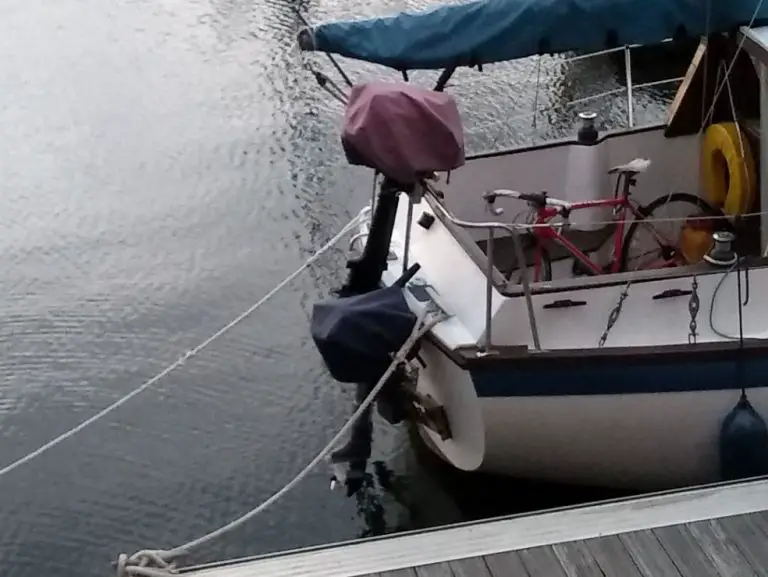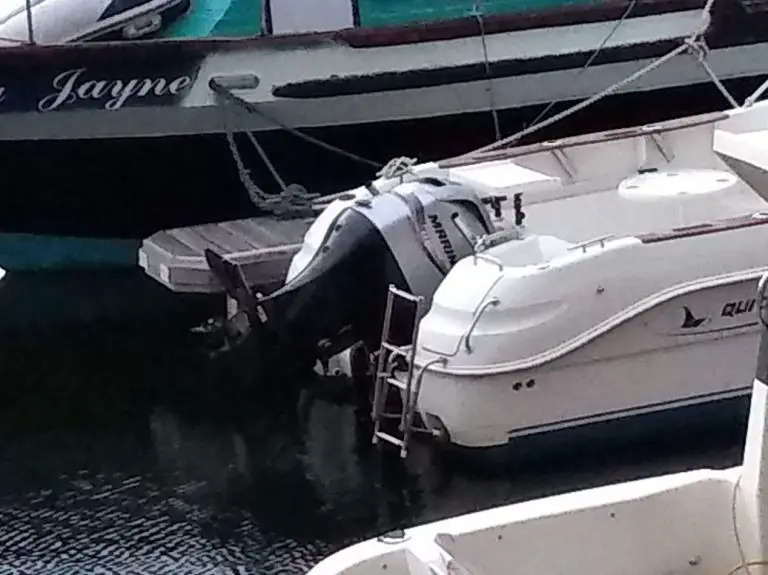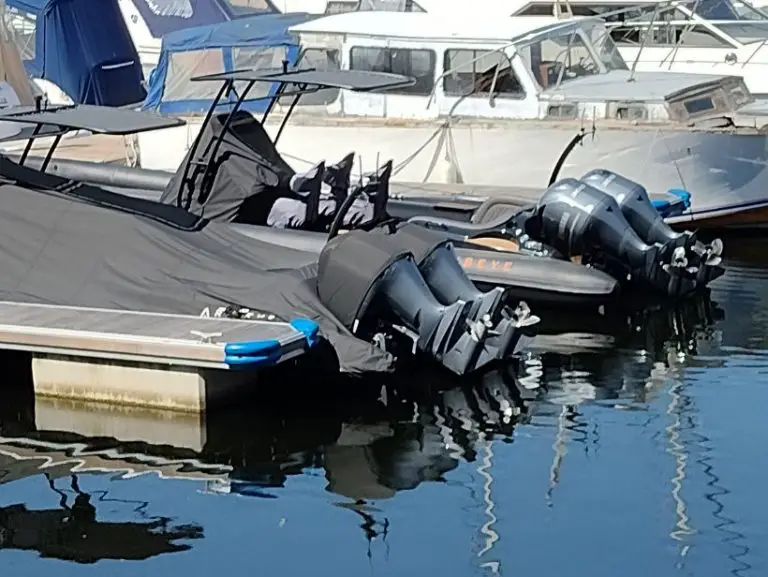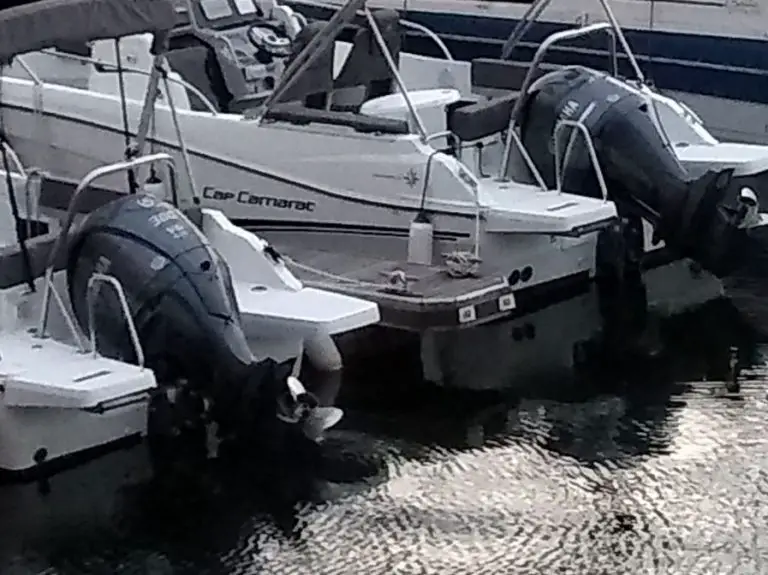Can You Use Starting Fluid on an Outboard Motor?
Starting fluid is commonly used in things like lawnmowers, and small gasoline and diesel engines, so many think it is therefore applicable to outboard motors by extension.
Only use starting fluid on your outboard in an emergency. It can help you to start your outboard one time but it will have a damaging effect in the long run as it is so powerful that it will strip the internal parts of your motor of any lubricant they may have.
You should also remove spark plugs before spraying any starting fluid on your outboard as the fluid is volatile and highly combustible, meaning it can cause an explosion if it is sprayed on spark plugs.
Using starting fluid on your outboard is therefore a slightly dangerous process and should only be done with due diligence and caution.
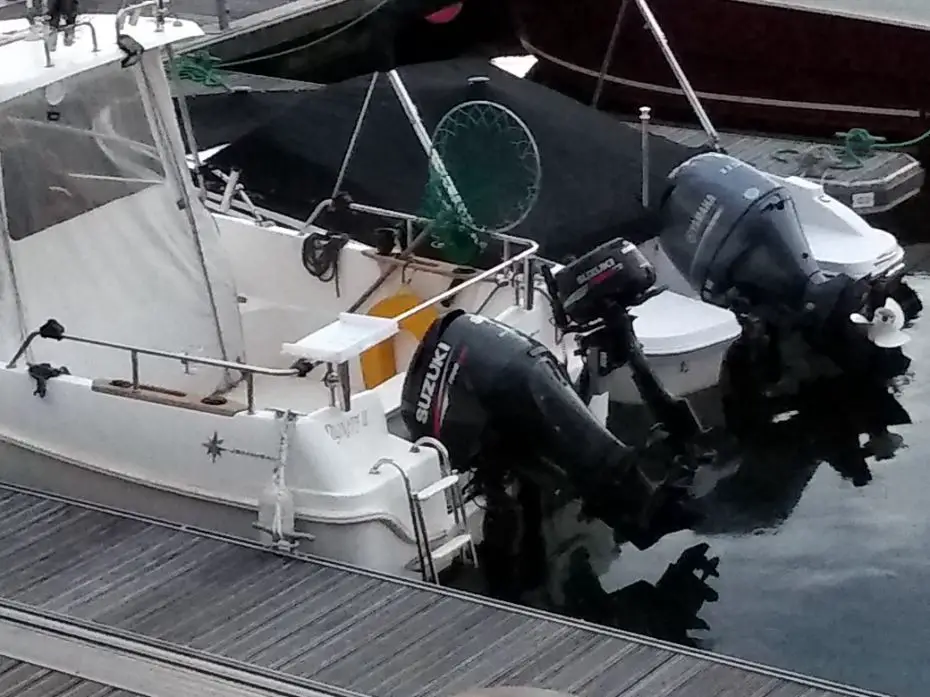
However, before trying any starting fluid on your outboard motor, try to diagnose the cause of the problem as there may be a safer and easier fix instead of using this highly volatile fluid.
Common Reasons Why an Outboard Motor Won’t Start
If you are having frequent problems starting your outboard, then you should look to diagnose it before reaching for a quick-fix solution like starting fluid.
An outboard will struggle to start if it’s not been used in a while, perhaps the starter motor has an issue like a flat battery. Cables might be corroded or disconnected, too. A loose killswitch will also prevent your outboard from starting, so check that, too.
It sounds obvious but don’t overlook checking your outboard for having enough, fuel, too! We all know this one but sometimes we can get ourselves into a fret and overlook the simple things, so remember this one, too.
You should try priming or choking your outboard, too, to see if there’s a fuel flow issue.
Do this by checking the primer bulb on your outboard, as shown in the video below.
There’s also a great video from Dangar Marine if you want to get really deep into how a primer bulb works on your outboard. Note that this one is a bit tricky and needs a decent amount of work to get to, so is more involved than some of the checks above.
Impact of Using Starting Fluid on an Outboard Motor
As you can see, starting fluid should be used with caution and it can have the following negative effects on a gas engine if used incorrectly or too often:
- Strip away lubricant on cylinder walls
- Strip away lubricant on piston rings
- Blow spark plugs
- Blow cylinder gaskets
Source: YouTube
Can you use starting fluid on a 2 stroke outboard?
No, starting fluid is not recommended for use on 2-stroke engines in general because it does not lubricate cylinder walls properly, stripping them and leaving them liable to damage, so using them on your 2-stroke outboard is not recommended, either.
WD-40 is also not recommended for 2-stroke outboard motors because it contains a lubricant but nowadays it is no longer combustible, meaning that it will not function as a starter fluid on an engine.
Starting fluid is bad for your outboard motor as it will cause problems in the long run by drying out the internal parts of the engine, leaving them dry, lacking proper lubrication and therefore prone to breaking and wearing faster.
Although you may not see any of these effects, they will be there so, despite the temptations and what you see online, it is best not to use starting fluid on your outboard, even when you are tempted to do so!
According to YouTuber, The Rusty Rooster, a better option for most engines would be to use a 50:1 ratio of gas to oil and spray it on instead of any starting fluid, which will work on a 2-stroke engine, too.
Where do you spray starting fluid on an outboard motor?
If you must use starting fluid on your outboard, you need to do a few
You can see Dangar Marine’s video on starting an outboard for the first time after a long period of no use here.
In the video, it’s recommended to remove the spark plugs before spraying any oil onto the outboard motor. Once the spark plugs are out, then spray just a little bit of oil onto the starter motor, ideally .
For a 4-stroke, you would need to do extra tasks like draining the sump oil and possibly changing the oil filter before spraying it with oil, too, so note the key difference there.
He also recommends trying to turn the nut on the crankshaft to check to see whether it has seized up in any way, if you can get to it.
Changing a Starter Motor on an Outboard
As a bonus tip, here’s a detailed guide for how to change a starter motor on an outboard, if you need it!

